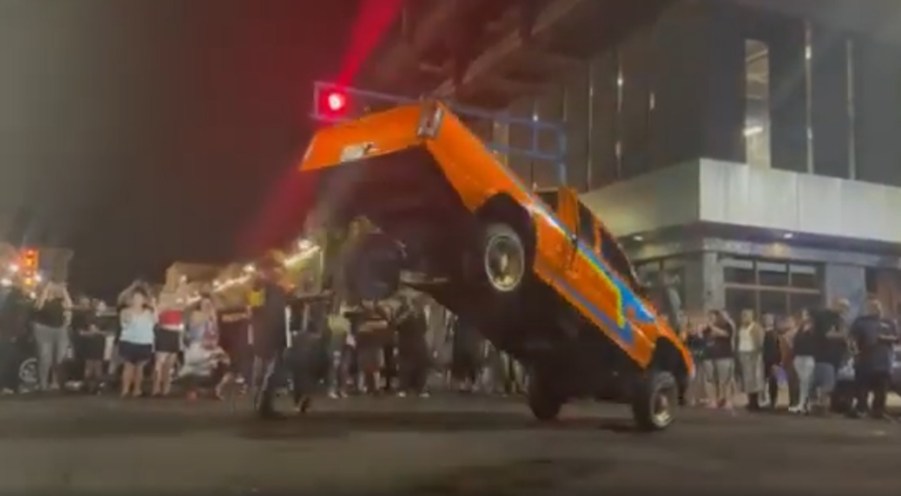
Watch This Modified Nissan Frontier Lowrider Dance its Way Into This Crowd’s Heart
The noises coming from the modified Nissan Frontier truck hopping, dancing, and bouncing in Downtown Albuquerque didn’t’ sound good. Suspension parts, frame parts, and body panels were smacking the asphalt. But the noises from the crowd were nothing but approving. Weekly hundreds of cars cruise a 1-mile strip of Route 66 in Albuquerque, New Mexico, but Sunday’s event was special when show cars from the Albuquerque Super Show came out to join the local cruise. The annual show brings lowriders and other classics from across the county to Albuquerque and after the show, those cars usually take to the streets to cruise. They range from pre-war Pontiacs and Chevys to every generation of Chevy Impala, mini trucks like the Nissan Frontier, to ultra-rare Chevy Bel Airs. Lowriders and lowrider culture are seeing a bit of a renaissance today as even the Smithsonian Magazine is featuring the cars as part of Americana.
This modified Nissan Frontier danced its way into the crowd’s heart
It’s not uncommon at lowrider shows to see cars jump all four wheels (at once) as a high as 12 feet or more in hopping competitions. But most hop on one axle. In this case, this 1990s modified Nissan Frontier had its hydraulic suspension tuned to quickly bounce the rear wheels to dance and hop. Of course, these competition cars and trucks don’t have any engines. That much pendulous weight would break a-arms and other expensive parts.
Hitting the switches: how do hydraulics work?

There’s a bit of athleticism involved with a hopping lowrider. Not only are you holding a cable connected to a 1,500-pound car that’s jumping next to you, but the switches themselves need a deft touch. The switches have a delay from the time you hit it to the time the truck jumps. It’s like hitting a key on a piano but waiting a second for the right note. Also, there’s no telling where a car or truck might land and what will happen when it does. The owners of these cars must be quick on their feet to quickly dodge a car that could fall in any direction. These are the opposite of “slammed” cars that simply ride low.
What type of hydraulics do lowriders use and how much do they cost?

Want to make your car hop? Get ready to spend some serious cash. Inexpensive systems cost $1,500 to buy, per wheel. That’s uninstalled, and that’s without the batteries (at least four) and the miles of hydraulic lines needed. Most compressors are in the trunk, and the pumps or actuators are located in the back. Custom high-performance kits can cost more than $30,000 to install. To buy a show car, like Kobe Bryant’s 1963 Impala with a show-quality system, expect to pay up to $250,000.
Some lowriders use lowering springs or airbag suspension systems to lower their cars. Airbags can raise and lower a car, but the react much more slowly than hydraulic systems, though they do provide a better ride.
What type of hydraulics do lowriders use and how much do they cost?
There are two parts of a lowrider’s hydraulic system, the actuator and the compressor. The compressor fills the actuator with fluid and then the actuator pushes the wheels down. When the pilot hits the switches to dump pressure, the cars and trucks can hop. The speed of the hop is controlled by a needle valve in the pump. In the video above you can see the rows of batteries and pumps in the bed of a Chevy El Camino built for hopping competitions.
The original idea was to create a suspension that lifted a low car over bumps in the pavement, but over the years more advanced systems have been able to push more and more power to the ground. The hydraulic systems are battery powered and require dozens of batteries in the truck, or bed, to power them.


